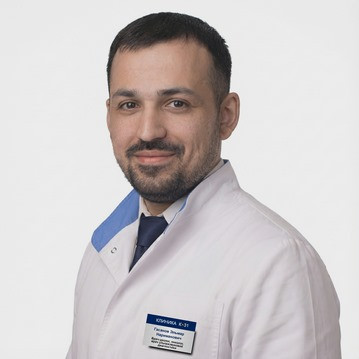Phimosis is a common urological disease characterized by narrowing of the foreskin, resulting in difficult or impossible exposure of the glans penis. Doctors divide phimosis into two types: physiological and pathological. Most often, newborn boys are diagnosed with physiological narrowing, which is accompanied by a partial opening of the head of the penis due to insufficiently mobile prepuce. In children who have reached the age of 6 months, physiological phimosis is observed in 80% of cases. Upon reaching the age of 3, the head is displaced in 90% of boys. Sometimes phimosis resolves on its own only at the age of 6-7 years.
If the head does not open in children in puberty and adult men, this is considered a pathological process. In this case, a consultation with a urologist is required. He will talk in more detail about what phimosis is, give recommendations on how to stretch the skin with phimosis and whether complications can occur with this disease.
Phimosis - what is it
Phimosis is a disease that significantly affects sexual life. During intercourse, the sensitivity of the penis is markedly reduced, which leads to the inability to achieve orgasm. This is due to the limited sliding of the prepuce along the head, which significantly reduces the stimulation of the erogenous zones of the penis.
Sometimes phimosis in men causes psychological or mechanical infertility. Also, the viability and motility of spermatozoa can be affected by recurrent infectious diseases of the urinary tract, characteristic of phimosis.
Stages and types of the disease
The following stages of the disease are distinguished according to the severity of the clinical picture:
- First, in a calm state, the head of the penis opens completely without the slightest effort. However, difficulties are noted during erection, when there is tension in the skin.
- Second - there are difficulties in opening the head both during rest and in an excited state.
- Third - the head is not completely exposed at rest, and when excited, this process becomes impossible. Urination is not disturbed.
- Fourth - the head does not open in any position, which leads to difficulty urinating. The selection occurs in a thin stream or drop by drop.
Depending on the morphological features, phimosis is divided into two types:
- scar;
- hypertrophic.
Cicatricial phimosis develops against the background of inflammatory diseases or injuries of the genital organs. Due to the strong narrowing of the prepuce, microcracks form on the skin, which form scars during the healing process. The disease belongs to the fourth stage of phimosis and must be removed surgically.
Hypertrophic phimosis is caused by excessive prepuce that prevents the opening of the head. The patient is not disturbed by pain and any discomfort. It will not be difficult to cure the disease if you know how to stretch the skin with phimosis.
Why phimosis occurs in children and adults
One of the causes of the disease in children is balanoposthitis. It appears with prolonged use of diapers and insufficient hygiene, which causes infection of the genitals. Balanoposthitis is characterized by swelling of the head, redness of the skin, pain and cramps during urination.
The reasons for the development of the disease in men of different ages include:
- damage to the prepuce with continuous use of the catheter;
- diabetes mellitus;
- hereditary connective tissue diseases;
- infections transmitted from a woman during intercourse;
- failed penis surgeries
- overheating causing swelling of the prepuce;
- hypothermia weakens the immune system;
- scleroderma of the penis;
- uneven penis enlargement and prepuce in adolescents;
- dermatological diseases.
Men who do not have sex or who have erectile dysfunction also have a tendency to develop phimosis. Sometimes the disease occurs when there is a lack of elastin in the connective tissues, varicose veins of the spermatic cord of the testicle, flat feet.
Sex with phimosis causes pain due to the impossibility of straightening the prepuce and its excessive tension. The more complicated the course of the disease, the more intense the pain during erection and intimacy. Sharp reciprocating movements can provoke microtears in the narrowed prepuce, causing bleeding. Also, with phimosis, there is a high probability of developing an infection due to the ingress of vaginal secretions and seminal fluid into the preputial space.
Phimosis in children: symptoms
The following symptoms are characteristic of the pathological type of the disease:
- impossibility of full release of the head of the penis;
- narrowing of the external opening of the prepuce;
- impaired urination;
- depressed state;
- elongated prepuce;
- pain syndrome during arousal in puberty.
In men, pathology leads to the appearance of wounds and cracks in the foreskin. There is also discomfort when going to the toilet, purulent discharge from the preputial sac appears. There may be redness and swelling of the head of the penis. At an advanced stage, the disease proceeds with elevated body temperature and an increase in inguinal lymph nodes.



















